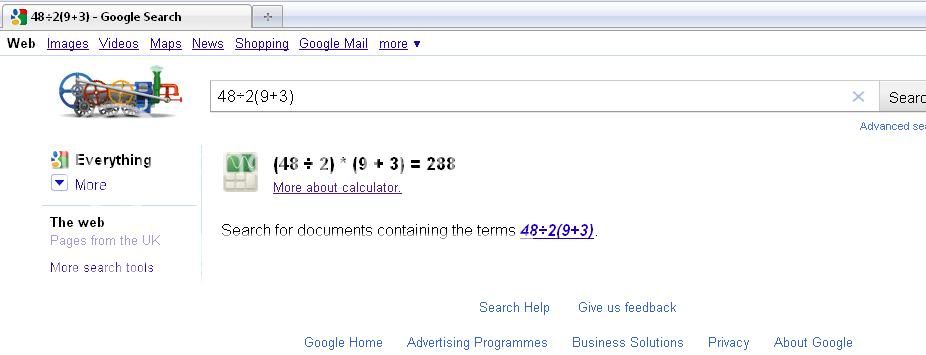|
|
An excellent question Lukie. Yes, your problem is ambiguous. No, I don't need half the forum to vote that way to say correctly that it is ambiguous. My position has nothing to do with popularity and everything to do with the math of it.
I welcome you to read about the history of order of operations. Math Forum - Ask Dr. Math
If in the 1600s they had decided on a whim that addition takes precedence over multiplication, your post would read like this:
Your previous post does bring up an interesting implication. Let's move on from the 48/2(9+3) thing and instead focus on something where there would be far greater consensus:
X = 3+4*5
I think we all would agree X = 35.
However, if I were somehow able to convince a great many people (say, half the people who post on forums) to place addition before multiplication, using the exact logic that you posted, this question then becomes ambiguous and 23 would then become an acceptable interpretation and 'it's ambiguous' would perhaps be the best answer'.*
ninja edit*
Obviously it's not a good idea to start tossing out new and unique sets of orders of operations because it would be like learning French before your trip to Spain. Everyone agreed that the best course of action was to get a general consensus on order of ops and stick to them for obvious reasons. But in this instance, some people, for reasons I do not know, differ slightly on how they interpret their order of operations which brings to light the fact that order of operations are an assumption.
Just to demonstrate how many assumptions and the like go into the proof of 1+1=2
Math Forum - Ask Dr. Math
The proof starts from the Peano Postulates, which define the natural
numbers N. N is the smallest set satisfying these postulates:
P1. 1 is in N.
P2. If x is in N, then its "successor" x' is in N.
P3. There is no x such that x' = 1.
P4. If x isn't 1, then there is a y in N such that y' = x.
P5. If S is a subset of N, 1 is in S, and the implication
(x in S => x' in S) holds, then S = N.
Then you have to define addition recursively:
Def: Let a and b be in N. If b = 1, then define a + b = a'
(using P1 and P2). If b isn't 1, then let c' = b, with c in N
(using P4), and define a + b = (a + c)'.
Then you have to define 2:
Def: 2 = 1'
2 is in N by P1, P2, and the definition of 2.
Theorem: 1 + 1 = 2
Proof: Use the first part of the definition of + with a = b = 1.
Then 1 + 1 = 1' = 2 Q.E.D.
Note: There is an alternate formulation of the Peano Postulates which
replaces 1 with 0 in P1, P3, P4, and P5. Then you have to change the
definition of addition to this:
Def: Let a and b be in N. If b = 0, then define a + b = a.
If b isn't 0, then let c' = b, with c in N, and define
a + b = (a + c)'.
You also have to define 1 = 0', and 2 = 1'. Then the proof of the
Theorem above is a little different:
Proof: Use the second part of the definition of + first:
1 + 1 = (1 + 0)'
Now use the first part of the definition of + on the sum in
parentheses: 1 + 1 = (1)' = 1' = 2 Q.E.D.
All of the bolded are common sense assumptions but to be unambiguous they need to be stated. That's just how math is. So without stating the assumptions, we're allowed to which ever we please, which makes a lot of grade school math ambiguous.
edit: It all comes down to this: To say 1+1=2 you even need to state that 1 is a number. Of course 1 is a number, everyone knows that! But if you don't state that it is a number, your problem could be ambiguous.
|






 Reply With Quote
Reply With Quote




























